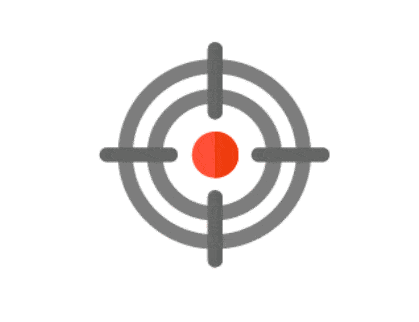Genentech Announces FDA Approval of Xolair (omalizumab) for Adults with Nasal Polyps
 South San Francisco, CA -- December 1, 2020 --
Genentech, a member of the Roche Group (SIX: RO, ROG; OTCQX: RHHBY), today announced that the U.S. Food and Drug Administration (FDA) has approved the company?s supplemental Biologics License Application (sBLA)?for Xolair???(omalizumab) for the add-on maintenance treatment of nasal polyps in adult patients 18 years of age and older with inadequate response to nasal corticosteroids. Nasal polyps can lead to a loss of smell and nasal congestion, and frequently co-occur with other respiratory conditions, such as allergies and asthma. With this approval, Xolair is now the first biologic for the treatment of nasal polyps that targets and blocks immunoglobulin E (IgE), a key driver of inflammation.
?With Xolair, we observed significantly reduced nasal polyps and congestion symptoms in adults who had nasal polyps in two pivotal Phase III studies,? said Joseph Han, M.D., Chief of the Division of Rhinology and the Division of Allergy at Eastern Virginia Medical School and study investigator of the POLYP 1 and POLYP 2 trials. ?Xolair provides a new option for treating these patients, who often have other respiratory and allergic conditions that may further worsen symptoms.?
The FDA?s approval is based on results from the Phase III POLYP 1 and POLYP 2 trials. Both trials showed that adult patients with nasal polyps who had an inadequate response to nasal corticosteroids and received Xolair had statistically significant greater improvement from baseline at Week 24 in Nasal Polyp Score (NPS) and weekly average Nasal Congestion Score (NCS) than patients who received placebo. The greater improvements in NPS and NCS in the Xolair group compared to the placebo group were observed as early as the first assessment at Week 4 in both studies. All patients received background nasal mometasone therapy during both the treatment period and a five-week run-in period. In POLYP 1 and POLYP 2, the mean change from baseline at Week 24 for Xolair compared to placebo were: NPS, -1.1 versus 0.1 (95% CI: -1.6, -0.7) and -0.9 versus -0.3 (95% CI: -1.1, -0.1); NCS, -0.9 versus -0.4 (95% CI: -0.8, -0.3) and -0.7 versus -0.2 (95% CI: -0.8, -0.2). POLYP 1 and POLYP 2 are the ninth and tenth Phase III trials for Xolair, respectively. Results from POLYP 1 and POLYP 2 were recently published in the?Journal of Allergy and Clinical Immunology.
?With today?s approval, people living with nasal polyps now have a treatment option that targets IgE, an underlying driver of various allergic conditions,? said Levi Garraway, M.D., Ph.D., chief medical officer and head of Global Product Development. ?We are committed to understanding the full potential of Xolair across the spectrum of allergic diseases and are excited to provide this important treatment for people living with nasal polyps.?
No new or unexpected safety signals were identified in patients treated with Xolair, with over 95% of patients completing each safety arm of POLYP 1 and POLYP 2. The most common adverse reactions (=3% of patients) included headache, injection site reaction, arthralgia, upper abdominal pain and dizziness. The safety profile in POLYP 1 and POLYP 2 was consistent with the established safety profile for Xolair.
?Adults living with nasal polyps may not be able to breathe through their nose and smell normally, and currently have limited treatment options,? said Tonya Winders, President and CEO, Allergy & Asthma Network. ?The approval of Xolair is welcome news for the community, providing another option to treat patients and help alleviate their symptoms.?
Xolair is an injectable biologic medicine that is also FDA-approved for the treatment of moderate to severe persistent allergic asthma in people 6 years of age or older whose asthma symptoms are not controlled by inhaled corticosteroids, and for chronic idiopathic urticaria (CIU) in people 12 years of age and older who continue to have hives that are not controlled by H1 antihistamines. Approximately 460,000 patients have been treated in the U.S. with Xolair since its initial approval for allergic asthma in 2003. In the U.S., Genentech and Novartis Pharmaceuticals Corporation work together to develop and co-promote Xolair.
About Nasal Polyps
Nasal polyps is a commonly occurring and potentially debilitating condition in adults, impacting 13 million people in the U.S. Currently, there are limited treatment options available and many patients opt for nasal surgery or systemic steroids. However, polyps may regrow over time. Nasal polyps present as noncancerous lesions on the lining of the nasal sinuses or nasal cavity associated with irritation and inflammation, which can block normal airflow. Nasal polyps may co-occur with other respiratory conditions, such as allergies and asthma.
About POLYP 1 and POLYP 2
POLYP 1 and POLYP 2 are replicate Phase III pivotal studies designed to determine the efficacy and safety of Xolair compared with placebo in adult patients with nasal polyps who had an inadequate response to nasal corticosteroids. Both trials were randomized, multicenter, double-blind and placebo-controlled. POLYP 1 involved 138 patients, and POLYP 2 involved 127 patients. The co-primary outcomes for both trials were change from baseline to Week 24 in average daily Nasal Congestion Score and Nasal Polyp Score. Patients in the studies were administered either Xolair or placebo by subcutaneous injection every two to four weeks in addition to background nasal mometasone therapy during both the treatment period and a five-week run-in period.
About Xolair
In the U.S., Xolair is the only approved antibody designed to target and block immunoglobulin E (IgE). By reducing free IgE, down-regulating high-affinity IgE receptors and limiting mast cell degranulation, Xolair minimizes the release of mediators throughout the allergic inflammatory cascade.
Xolair U.S. Indications
XOLAIR??(omalizumab) for subcutaneous use is an injectable prescription medicine used to treat:
South San Francisco, CA -- December 1, 2020 --
Genentech, a member of the Roche Group (SIX: RO, ROG; OTCQX: RHHBY), today announced that the U.S. Food and Drug Administration (FDA) has approved the company?s supplemental Biologics License Application (sBLA)?for Xolair???(omalizumab) for the add-on maintenance treatment of nasal polyps in adult patients 18 years of age and older with inadequate response to nasal corticosteroids. Nasal polyps can lead to a loss of smell and nasal congestion, and frequently co-occur with other respiratory conditions, such as allergies and asthma. With this approval, Xolair is now the first biologic for the treatment of nasal polyps that targets and blocks immunoglobulin E (IgE), a key driver of inflammation.
?With Xolair, we observed significantly reduced nasal polyps and congestion symptoms in adults who had nasal polyps in two pivotal Phase III studies,? said Joseph Han, M.D., Chief of the Division of Rhinology and the Division of Allergy at Eastern Virginia Medical School and study investigator of the POLYP 1 and POLYP 2 trials. ?Xolair provides a new option for treating these patients, who often have other respiratory and allergic conditions that may further worsen symptoms.?
The FDA?s approval is based on results from the Phase III POLYP 1 and POLYP 2 trials. Both trials showed that adult patients with nasal polyps who had an inadequate response to nasal corticosteroids and received Xolair had statistically significant greater improvement from baseline at Week 24 in Nasal Polyp Score (NPS) and weekly average Nasal Congestion Score (NCS) than patients who received placebo. The greater improvements in NPS and NCS in the Xolair group compared to the placebo group were observed as early as the first assessment at Week 4 in both studies. All patients received background nasal mometasone therapy during both the treatment period and a five-week run-in period. In POLYP 1 and POLYP 2, the mean change from baseline at Week 24 for Xolair compared to placebo were: NPS, -1.1 versus 0.1 (95% CI: -1.6, -0.7) and -0.9 versus -0.3 (95% CI: -1.1, -0.1); NCS, -0.9 versus -0.4 (95% CI: -0.8, -0.3) and -0.7 versus -0.2 (95% CI: -0.8, -0.2). POLYP 1 and POLYP 2 are the ninth and tenth Phase III trials for Xolair, respectively. Results from POLYP 1 and POLYP 2 were recently published in the?Journal of Allergy and Clinical Immunology.
?With today?s approval, people living with nasal polyps now have a treatment option that targets IgE, an underlying driver of various allergic conditions,? said Levi Garraway, M.D., Ph.D., chief medical officer and head of Global Product Development. ?We are committed to understanding the full potential of Xolair across the spectrum of allergic diseases and are excited to provide this important treatment for people living with nasal polyps.?
No new or unexpected safety signals were identified in patients treated with Xolair, with over 95% of patients completing each safety arm of POLYP 1 and POLYP 2. The most common adverse reactions (=3% of patients) included headache, injection site reaction, arthralgia, upper abdominal pain and dizziness. The safety profile in POLYP 1 and POLYP 2 was consistent with the established safety profile for Xolair.
?Adults living with nasal polyps may not be able to breathe through their nose and smell normally, and currently have limited treatment options,? said Tonya Winders, President and CEO, Allergy & Asthma Network. ?The approval of Xolair is welcome news for the community, providing another option to treat patients and help alleviate their symptoms.?
Xolair is an injectable biologic medicine that is also FDA-approved for the treatment of moderate to severe persistent allergic asthma in people 6 years of age or older whose asthma symptoms are not controlled by inhaled corticosteroids, and for chronic idiopathic urticaria (CIU) in people 12 years of age and older who continue to have hives that are not controlled by H1 antihistamines. Approximately 460,000 patients have been treated in the U.S. with Xolair since its initial approval for allergic asthma in 2003. In the U.S., Genentech and Novartis Pharmaceuticals Corporation work together to develop and co-promote Xolair.
About Nasal Polyps
Nasal polyps is a commonly occurring and potentially debilitating condition in adults, impacting 13 million people in the U.S. Currently, there are limited treatment options available and many patients opt for nasal surgery or systemic steroids. However, polyps may regrow over time. Nasal polyps present as noncancerous lesions on the lining of the nasal sinuses or nasal cavity associated with irritation and inflammation, which can block normal airflow. Nasal polyps may co-occur with other respiratory conditions, such as allergies and asthma.
About POLYP 1 and POLYP 2
POLYP 1 and POLYP 2 are replicate Phase III pivotal studies designed to determine the efficacy and safety of Xolair compared with placebo in adult patients with nasal polyps who had an inadequate response to nasal corticosteroids. Both trials were randomized, multicenter, double-blind and placebo-controlled. POLYP 1 involved 138 patients, and POLYP 2 involved 127 patients. The co-primary outcomes for both trials were change from baseline to Week 24 in average daily Nasal Congestion Score and Nasal Polyp Score. Patients in the studies were administered either Xolair or placebo by subcutaneous injection every two to four weeks in addition to background nasal mometasone therapy during both the treatment period and a five-week run-in period.
About Xolair
In the U.S., Xolair is the only approved antibody designed to target and block immunoglobulin E (IgE). By reducing free IgE, down-regulating high-affinity IgE receptors and limiting mast cell degranulation, Xolair minimizes the release of mediators throughout the allergic inflammatory cascade.
Xolair U.S. Indications
XOLAIR??(omalizumab) for subcutaneous use is an injectable prescription medicine used to treat:
- moderate to severe persistent asthma in people 6 years of age and older whose asthma symptoms are not controlled with their current asthma medicines. A skin or blood test is performed to see if people have allergies to year-round allergens.
- nasal polyps in people 18 years of age and older when medicines to treat nasal polyps called nasal corticosteroids have not worked well enough. It is not known if XOLAIR is safe and effective in people with nasal polyps under 18 years of age.
- chronic idiopathic urticaria (CIU, chronic hives without a known cause) in people 12 years of age and older who continue to have hives that are not controlled with their current CIU medicines.
- wheezing, shortness of breath, cough, chest tightness, or trouble breathing
- low blood pressure, dizziness, fainting, rapid or weak heartbeat, anxiety, or feeling of ?impending doom?
- flushing, itching, hives, or feeling warm
- swelling of the throat or tongue, throat tightness, hoarse voice, or trouble swallowing
- have a latex allergy or any other allergies (such as food allergy or seasonal allergies). The needle cap on the XOLAIR prefilled syringe may contain latex
- have sudden breathing problems (bronchospasm)
- have ever had a severe allergic reaction called anaphylaxis
- have or have had a parasitic infection
- have or have had cancer
- are pregnant or plan to become pregnant. It is not known if XOLAIR may harm an unborn baby.
- are breastfeeding or plan to breastfeed. It is not known if XOLAIR passes into breast milk. Patients should talk with their healthcare provider about the best way to feed a baby while they receive XOLAIR.
- XOLAIR should be given by a healthcare provider, in a healthcare setting.
- XOLAIR is given in 1 or more injections under the skin (subcutaneous), 1 time every 2 or 4 weeks.
- In people with asthma and nasal polyps, a blood test for a substance called IgE must be performed prior to starting XOLAIR to determine the appropriate dose and dosing frequency.
- In people with chronic hives, a blood test is not necessary to determine the dose or dosing frequency.
- Patients should not decrease or stop taking any of their other asthma, nasal polyps, or hive medicine unless their healthcare providers tell them to.
- Patients may not see improvement in their symptoms right away after XOLAIR treatment.
- See,??What is the most important information I should know about XOLAIR??regarding the risk of anaphylaxis.
- Cancer.?Cases of cancer were observed in some people who received XOLAIR.
- Inflammation of the blood vessels.?Rarely, this can happen in people with asthma who receive XOLAIR. This usually, but not always, happens in people who also take a steroid medicine by mouth that is being stopped or the dose is being lowered. It is not known whether this is caused by XOLAIR. Patients should tell their healthcare provider right away if they have rash; chest pain; shortness of breath; or a feeling of pins and needles or numbness of their arms or legs.
- Fever, muscle aches, and rash.?Some people who take XOLAIR get these symptoms 1 to 5 days after receiving a XOLAIR injection. If patients have any of these symptoms, they should tell their healthcare provider.
- Parasitic infection.?Some people who are at a high risk for parasite (worm) infections, get a parasite infection after receiving XOLAIR. A healthcare provider can test stool to check if patients have a parasite infection.
- Heart and circulation problems.?Some people who receive XOLAIR have had chest pain, heart attack, blood clots in the lungs or legs, or temporary symptoms of weakness on one side of the body, slurred speech, or altered vision. It is not known whether this is caused by XOLAIR.
- In adults and children 12 years of age and older with asthma:?pain especially in the arms and legs, dizziness, feeling tired, skin rash, bone fractures, and pain or discomfort of the ears.
- In children 6 to less than 12 years of age with asthma:?common cold symptoms, headache, fever, sore throat, pain or discomfort of the ear, abdominal pain, nausea, vomiting and nose bleeds.
- In adults with nasal polyps?:?headache, injection site reactions, joint pain, upper abdominal pain, and dizziness.
- In people with chronic idiopathic urticaria:?nausea, headaches, swelling of the inside of the nose, throat or sinuses, cough, joint pain, and upper respiratory tract infection.





